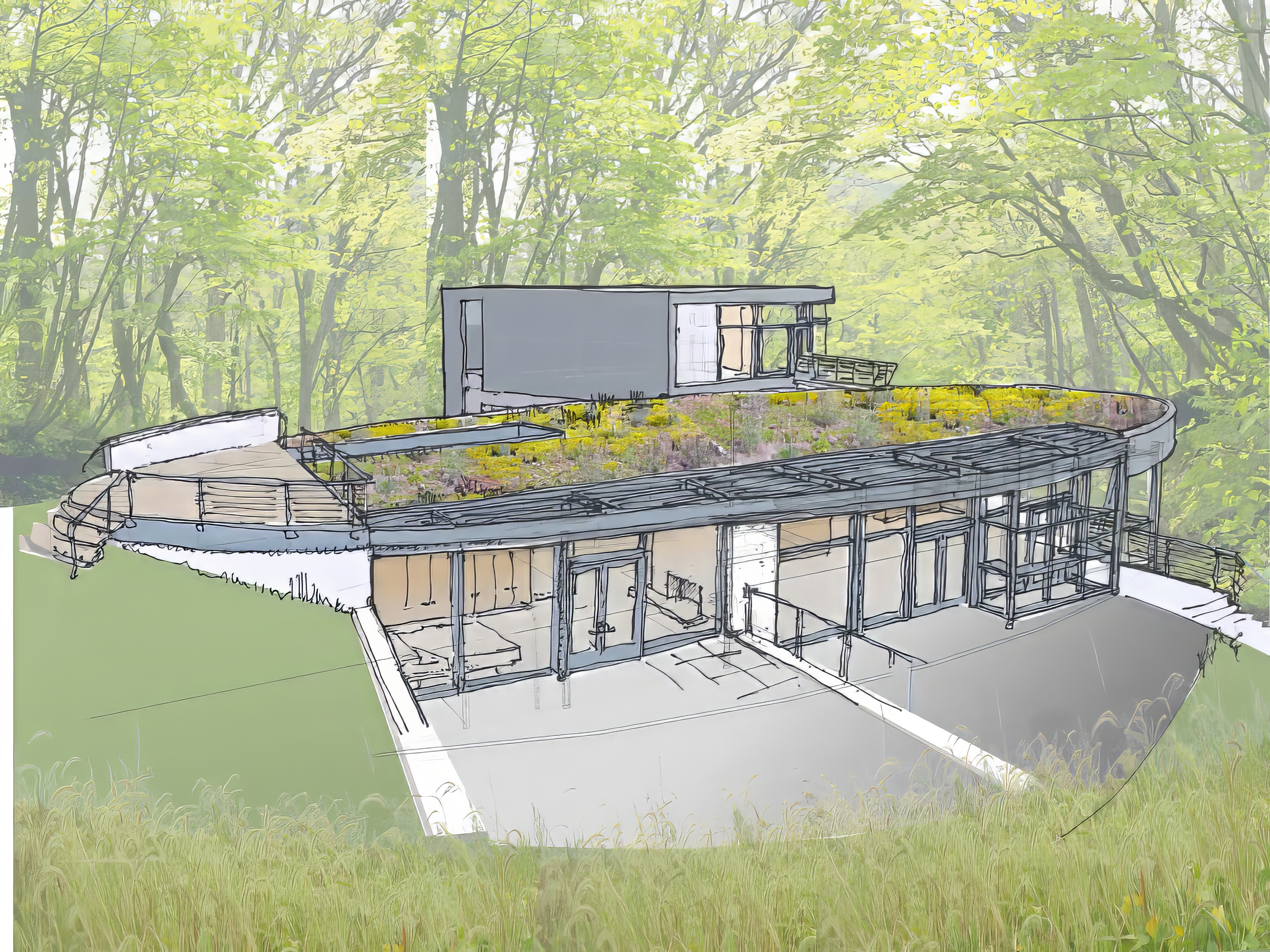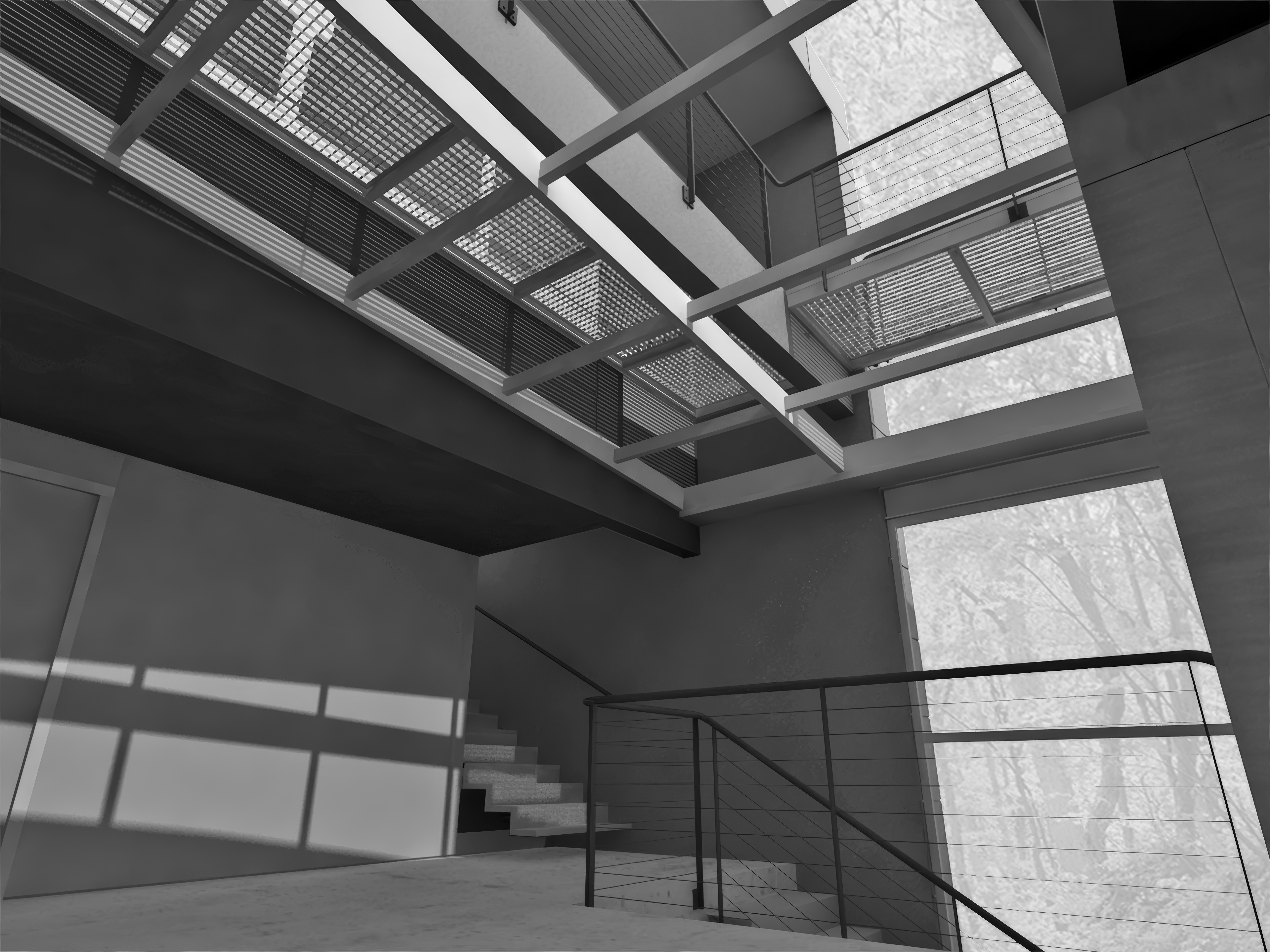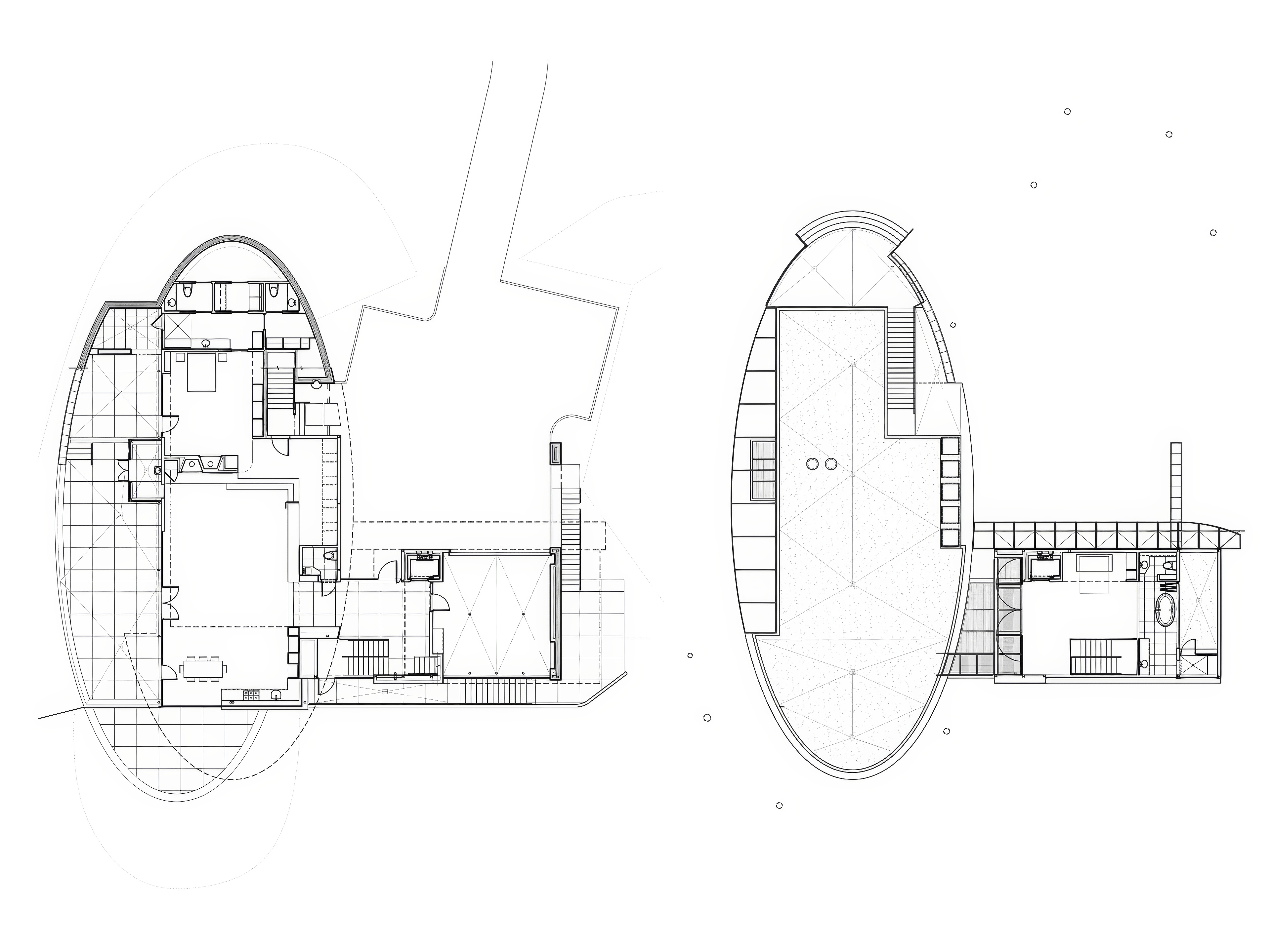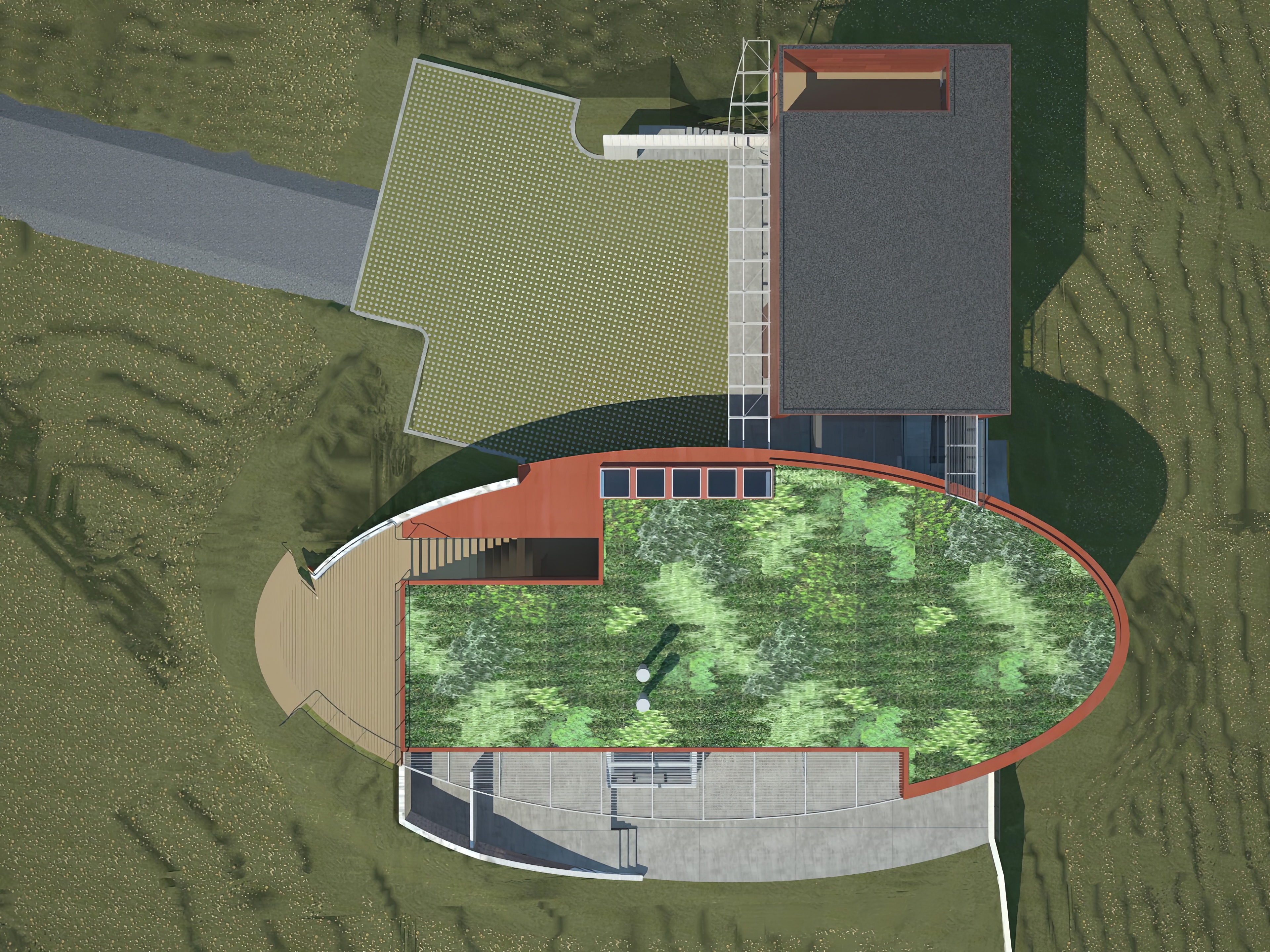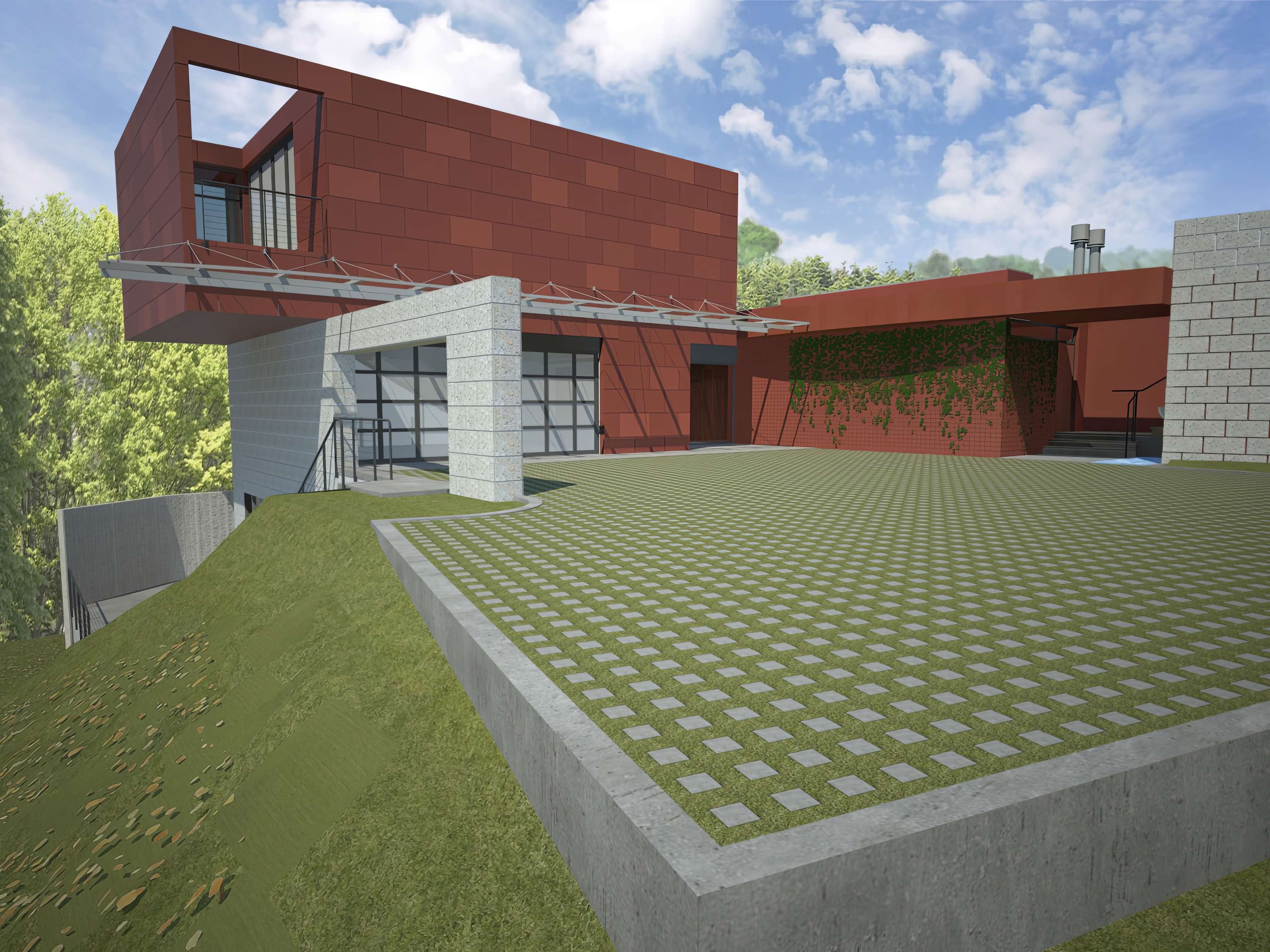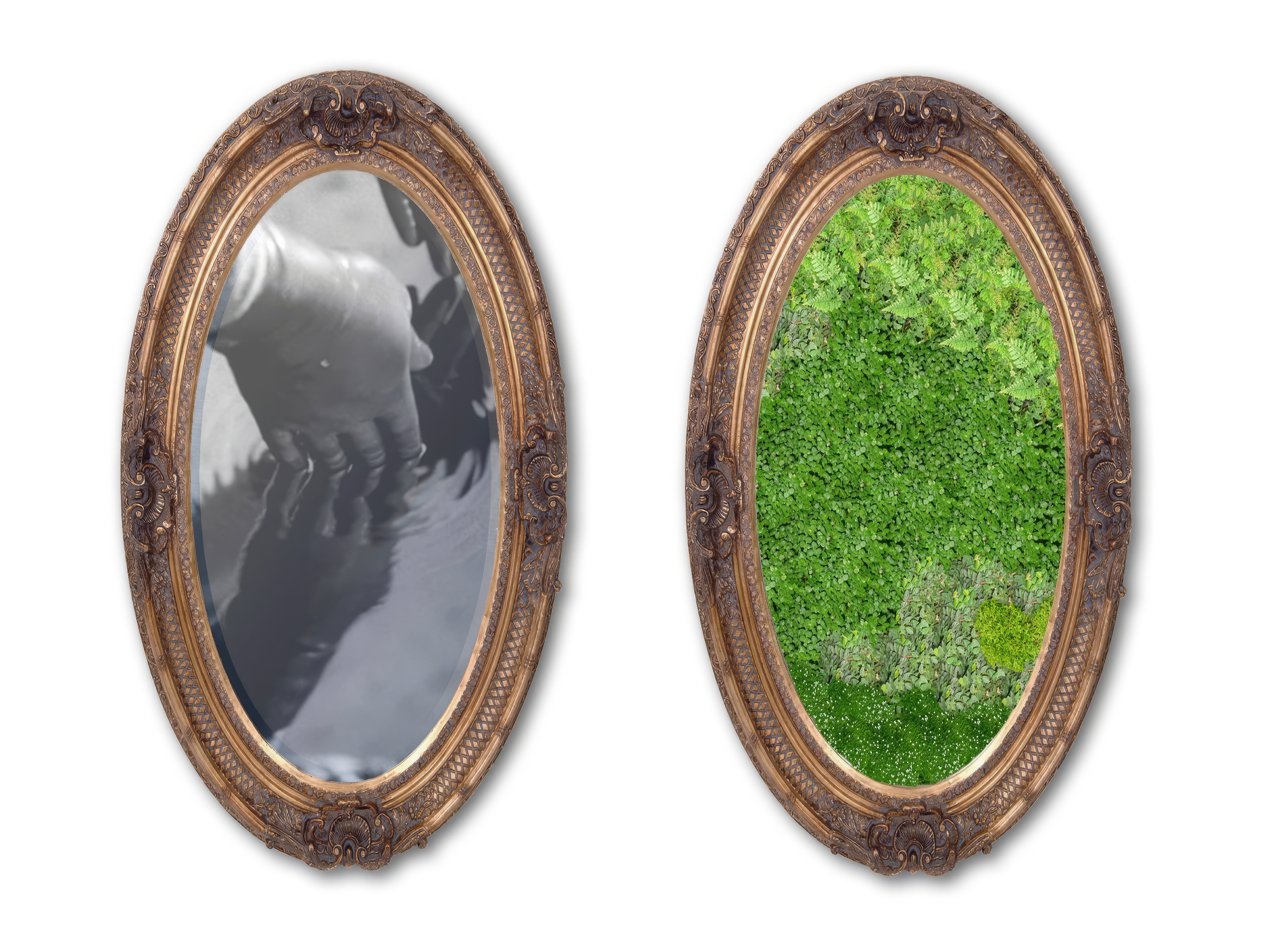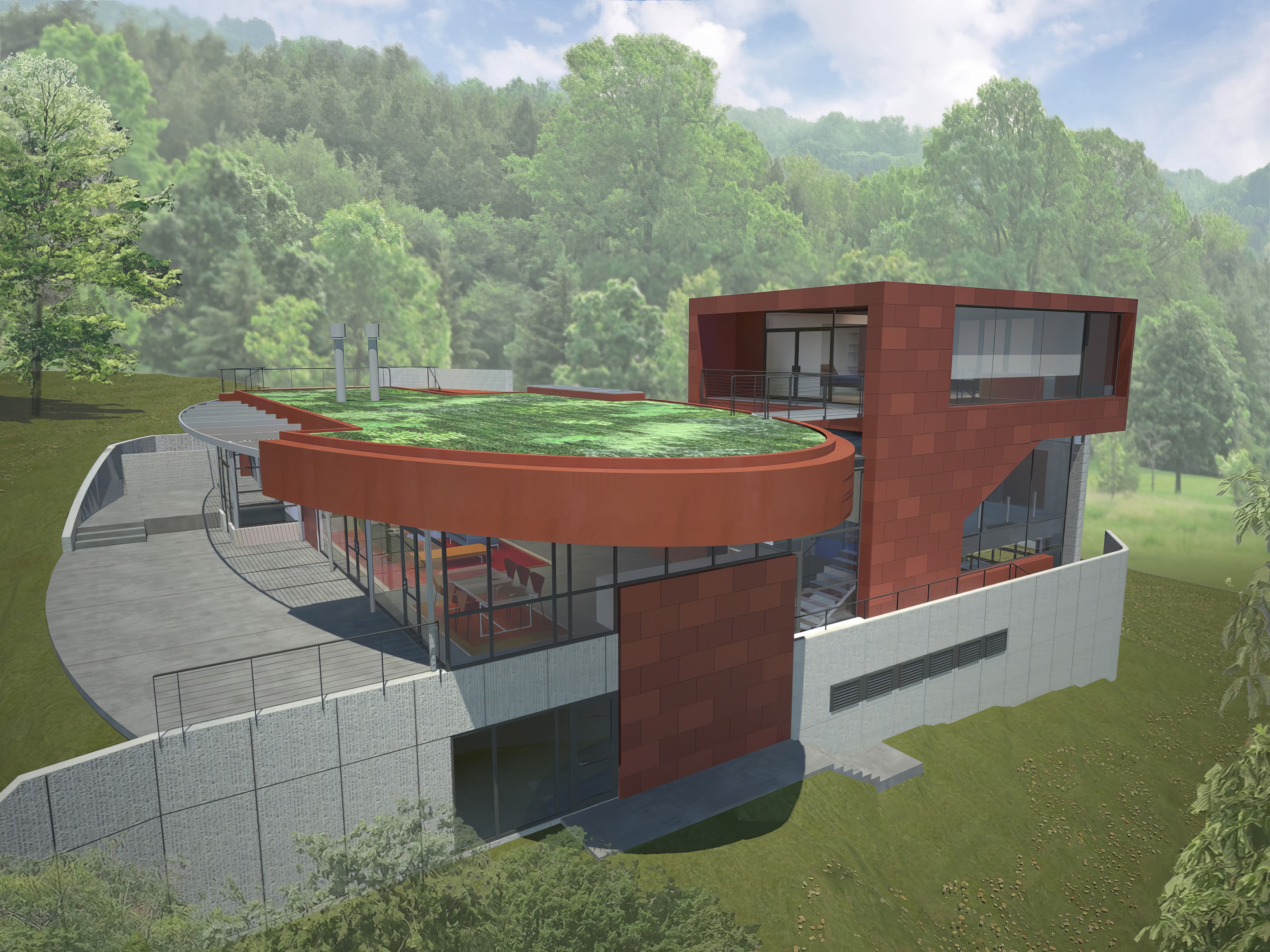Edgar House
The argument that multi-family homes use fewer resources than single-family homes doesn’t carry much weight in this part of the United States, where citizens are fiercely protective of their independence. Homes, like big cars, are representations of success. Thus, Developers will build suburban homes. Architects in the past have not adequately addressed suburbia. Our intent through the Edgar House is to provide a carefully designed, energy-efficient, live-work option to compete with the commuter model, saving both driving time and all the costs associated with cars.
Project Description
The clients are a metal fabricator, who wants to live and work on top of this wooded hill, and his wife, who wishes to live more modestly. How do we accommodate their different needs? Namely, we design a home that is, literally, an observation platform, which deflects from itself by directing views back to the trees. This is the opposite of the suburban ‘McMansion’ prototype in which the contractor chops down trees and the house reads as an object. Here the forest remains and the building is secondary. A roof garden mirrors the leaves of the trees.
Read More >Guests may enter the Edgar House through what may be the world’s first living door, descending into the rooftop earth like Cocteau’s Orpheus entering the underworld. As a result, they may expect a cave experience but instead they see into the forest in every direction. The woods thus become an integral part of the home experience, providing the owners with oxygen, shade, privacy, and beauty.
This is a home whose visual richness is progressively revealed. From below, it becomes clear that the roof floats above open living space. The automobile entry is deliberately unassuming. The interior plan is simple and open, leading to an interior that natural light falls upon at all times of the day. The kitchen is the project’s conceptual and geographic center with the front entry, the living room, the greenhouse, the garage, and the deck only steps away.
Site Strategy
New homes are displacing the local woodlands. But 95% of this lot will remain untouched. Our plans include instructions to save every tree possible and to bury more than half the buildings area below grade. No fences will separate this home from its neighbors. Despite the home’s unconventional appearance, the neighbors support the construction because we preserved their walking paths and left their street views will unimpeded.
Environmental Benefits
Also, it’s green: We are reinforcing the building’s connection to nature by employing a variety of sustainable products and methods, including an intensive green roof, geothermal wells, radiant floors, recycled newspaper insulation, and insulated concrete foundations. And we have employed shading devices that will block summer sun while allowing winter light to fill the interior. The interior plan is flexible and open, resulting in light-filled spaces that can be used for different purposes as needs change. This is ‘bottom-up’ architecture, in which affordable, easy-to-build strategies are employed to create extraordinary experience.
Ideas transcend style: The interior plan is flexible and open, resulting in light-filled spaces that one can use for different purposes as needs change. This is ‘bottom-up’ architecture, in which the architect employs affordable, easy-to-build strategies to create extraordinary experience.
Working from home is good for the planet. Just as important, the Edgar House concept celebrates nature by displacing attention from the house back to the woods. A building that enhances its occupants’ perception of natures beauty is one that will encourage all who visit to better respect the environment.
The house is located on the same wooded site as another FISHER ARCHitecture designed home, the earth-sheltered Ewing House.



